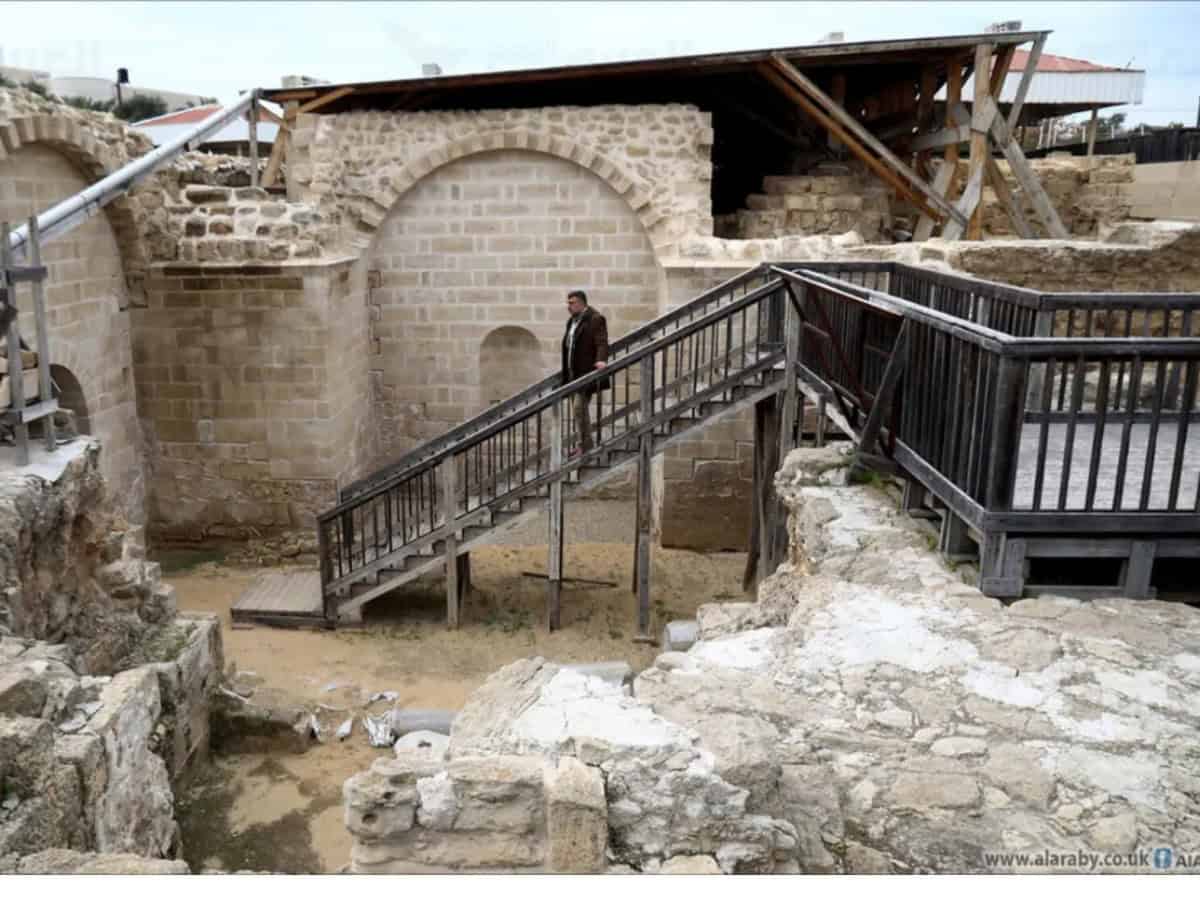
A high-level Palestinian delegation is scheduled to take part in the 46th session of the World Heritage Committee, hosted by UNESCO in New Delhi. They aim to advocate for the inclusion of the Saint Hilarion monastery at the archaeological site Tell Umm Amer in the Gaza Strip on the list of World Heritage in danger.
The session is scheduled to take place from July 21-31 at the Bharat Mandapam, International Exhibition and Convention Center (IECC).
In a statement released on X, Dr Abu Jaze the Media Advisor of the Palestine Embassy in New Delhi stated that the delegation will engage with the 21 member states of the World Heritage Committee to garner support for their proposal.
Abu Jazer revealed that the delegation will include key officials such as Palestine’s ambassador to UNESCO, Monir Anastas, Palestine’s ambassador to India Adnan Abu Al-Hayjaa, Political consular Abed Elrazeg Abu Jazer.
The Director General of Heritage at the Palestinian Ministry of Tourism in Ramallah Ahmed Rajoub and Hanan Najjajrah from the Ministry of Tourism in Ramallah will also be part of the delegation.
Objective of Palestinian delegation
According to Dr Abu Jazer, the primary aim of the Palestinian delegation is to advocate for the inclusion of the Tell Umm Amer Monastery of St Hilarwi, located in the war-torn Gaza Strip, on the List of World Heritage in Danger.
This site is significant for its historical and cultural value. The Palestinian officials seek to highlight its precarious condition and threats due to ongoing Israeli aggression. The officials demanded a need for international support and protection.
Historical significance of Tell Umm Amer
The Tell Umm Amer site dates back to the Roman era and is situated on Wadi Gaza near the seashore.
It appears on the Maraca map with the name of Tabatha, dating from the Byzantine to the early Islamic period (400-670AD).
The site contains the ruins of the monastery of Saint Hilarion (born in 291 AD), which consists of two churches, a burial site, a baptism hall, a public cemetery, an audience hall, and dining rooms.
The monastery was provided with good infrastructure facilities, including water cisterns, clay ovens and drainage channels. Its floors were partially paved with limestone, marble tiles and coloured mosaics, decorated with plants and animal scenes.
In addition, the monastery was equipped with baths, consisting of Frigedarium, Tepidarium and Caldarium halls. The wide space of these halls ensured that the baths could adequately serve the pilgrims and merchants crossing the Holy Land from Egypt to the Fertile Crescent through the main route of Via Maris.
Tell Umm Amer (Tabatha) was the birthplace of Saint Hilarion, who had received a splendid education in Alexandria, and had gone to Antonius in the desert for further instruction. He founded his eponymous monastery in the third century and is considered the founder of monastic life in Palestine.
India’s support
Abu Jazer noted that Palestine has sought India’s support in the endeavour, highlighting that India is a member of the World Heritage Committee and the host country.
Abu Jazer in the statement said that India has promised to assist the Palestinian request. The officials view the Indian support as a crucial step in enhancing the capabilities of Palestinians to protect their cultural heritage, especially in light of the ongoing threats posed by conflict.
“The State of Palestine seeks, by registering the site, to provide protection for heritage sites in Palestine that are being targeted and systematically destroyed by the Israeli occupation forces, specifically in its brutal war in the Gaza Strip, which affected all cultural buildings and archaeological sites,” Abu Jazer stated.

